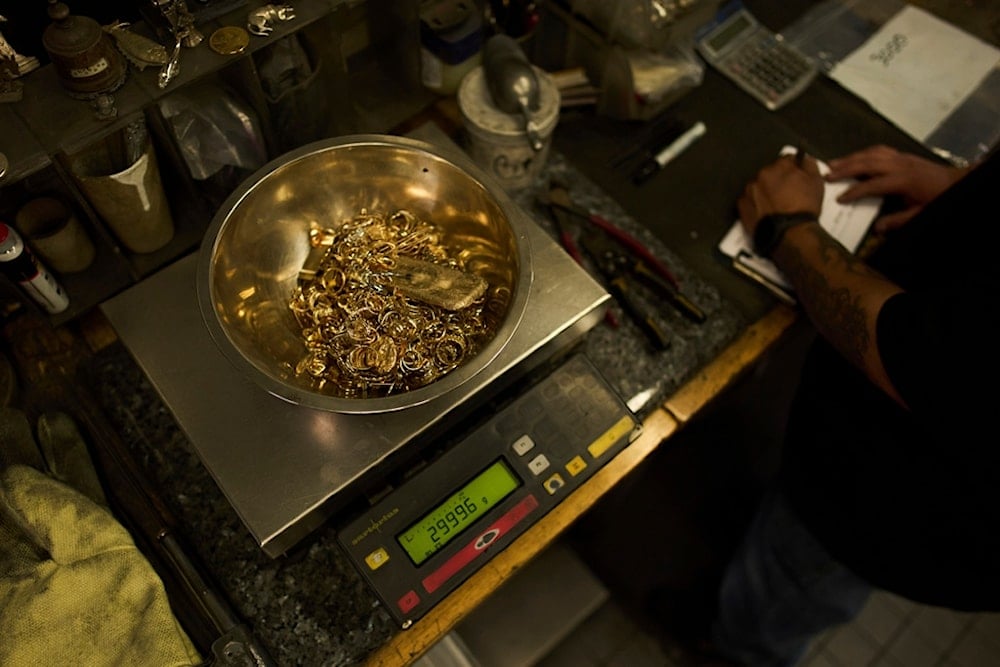Gold hits record high above $3,720 an ounce amid market uncertainty
Gold prices surged to $3,721 per ounce, setting a new record as investors seek safety amid inflation worries, a weaker dollar, and geopolitical risks.
-

A bowl filled with gold jewelry and a gold bar is weighed at A&M Precious Metals in the St. Vincent Jewelry Center in the Jewelry District of Los Angeles, Friday, May 2, 2025. (AP)
Gold prices climbed to an all-time record on Monday, breaking above $3,720 per troy ounce as investors poured into the safe-haven asset amid persistent market uncertainty.
According to trading data, December gold futures on the New York Comex exchange rose 0.95% to $3,721 per troy ounce at 15:58 GMT, marking a new historical peak.
Analysts said the rally reflected strong demand for hedges against inflation and geopolitical risk, as well as expectations of further central bank purchases. Traders noted that lower bond yields and a weaker dollar have also supported bullion’s upward momentum in recent sessions.
Gold soaring high
Gold prices soared to fresh all-time highs last Monday, closing in on targets that Wall Street analysts had only recently forecast for the months ahead.
Spot bullion climbed to $3,646.43 an ounce, leaving it less than $55 shy of the $3,700 mark projected by Goldman Sachs and UBS.
Futures for December delivery on New York's Comex reached $3,685.42, just $15 short of the same milestone.
Goldman and UBS argued on September 3 that a mix of sustained central bank purchases and increased inflows into gold-backed exchange-traded funds could drive bullion to $3,700 within months. The latest surge has brought those projections within reach in a matter of days.
Analysts warn that even if the market dips, downside risks appear limited, with buyers likely stepping in around $3,600.
Gold rally accelerates
The rally has been powered primarily by expectations that the US Federal Reserve will cut interest rates at its September 17 meeting. Markets are pricing at least a 50-basis-point reduction after the Fed kept its benchmark range steady at 4.25-4.5% since December.
Lower yields reduce the opportunity cost of holding non-interest-bearing assets like gold, giving bullion a decisive edge.
Other forces have reinforced the upswing. The People's Bank of China has continued to add to its gold reserves for ten straight months, part of a broader trend of official-sector buying that has underpinned global demand.
At the same time, fresh capital is flowing into gold ETFs after years of outflows, while geopolitical uncertainty and a weaker dollar have encouraged investors to treat the metal as a safe-haven hedge.

 3 Min Read
3 Min Read








